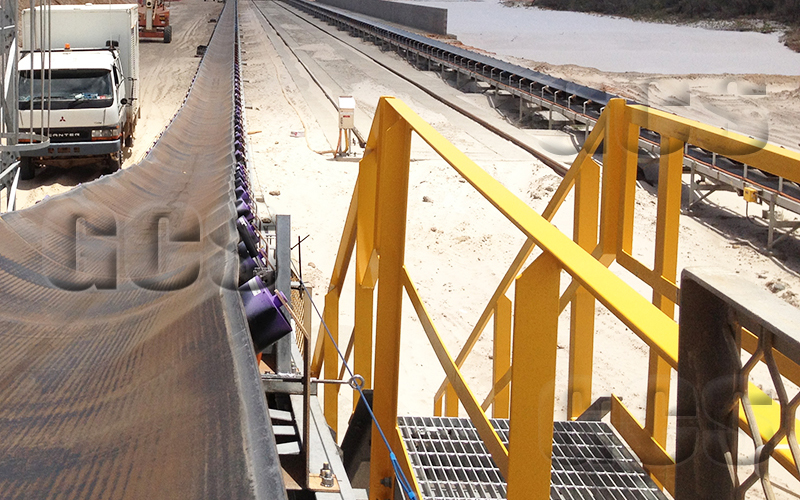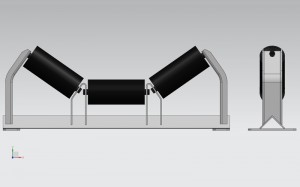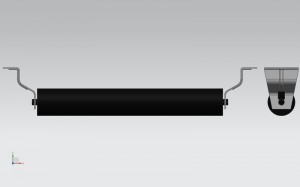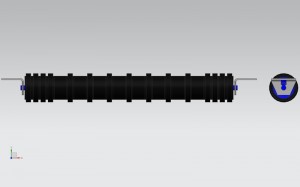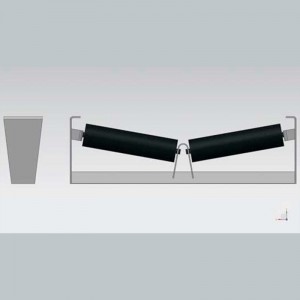What is an idler roller?
Idlers are an integral part of any conveyor system. These components support the belt once it is loaded, allowing it to move material smoothly from one location to another. Troughing idlers are designed such that the loaded belt itself forms a trough, which both reduces the risk of material spillage and increases the ultimate load-bearing ability of the conveyor for improved safety and productivity. Next, follow Next, follow Global Conveyor Supplies Company Limited (GCS) idler manufacturers to understand
Idlers are cylindrical rods that extend under and along the conveyor belt. It is the most important component/assembly of the trough belt conveyor. The idler is usually located in the trough-shaped metal support frame under the support side to support the conveyor belt and materials.
Different types of idler rollers
Different types of idler rollers
There are two types of idler rollers: carrying idlers and return idlers. They are located on the support side and return side of the conveyor. These idlers have many types and functions due to specific applications.
Carrying idlers
Troughing idlers
Troughs are common carrying idler types on the load side of conveyors. They are usually installed in a trough-shaped frame on the load side along the length of the conveyor belt to guide the rubber conveyor belt and support the conveyed material. The troughing idler includes a central idler with a certain width and side wing idlers on both sides of the central roller.
Trough idlers usually have 20°, 35°, and 45° angles.
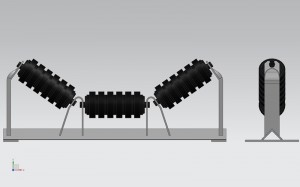
In quarry and mining applications, when large, heavy and sharp materials fall onto the conveyor belt, they can cause impact and damage to the conveyor belt, which ultimately leads to downtime and higher replacement costs. Therefore, an impact idler is required in the material impact area.
It uses a rubber ring design to provide a buffer and absorb impact in the material impact area, and it minimizes the damage to the conveyor belt.
The interval between impact idler sets is usually 350 mm to 450 mm to provide overall support.
Picking table idlers
A picking table idler is usually used at the material loading point under the hopper. Compared with the troughing idler, the center roller of the picking table idler is longer, and the short roller with a 20° trough angle can disperse materials to the greatest extent and make inspection and classification easier.
Flat carrying idlers/Impact flat idlers
It is often used for conveying materials on high-speed flat belts. Transporting large, hard materials requires the use of impact flat belt idlers, which can buffer and protect the belt.
Self-training idler
The misalignment of the conveyor belt may cause material overflow. Therefore, when installing the idler rollers, a self-training idler group must be installed, which can control the alignment of the conveyor belt on the support side. A self-training roller is usually placed at intervals of 100-150 feet. When the total length of the belt is less than 100 feet, at least one training idler should be installed.
The self-training roller has a troughing angle of 20°, 35°, and 45°.
Return idlers
The flat return idler is the most common idler on the return side of the conveyor to support the return run of the conveyor belt. It consists of a steel rod installed on two lifting brackets, which can effectively prevent the belt from stretching, slack, and damage.
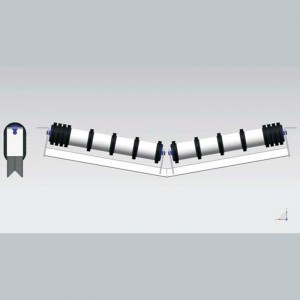
Commonly used in the application of conveying viscous and abrasive materials, the rubber disc can remove the materials stuck on the conveyor belt on the return side.
Self-training return idlers
It is used to control the alignment of the conveyor belt on the return side to prevent damage to the conveyor belt and structure. The installation distance is the same as the self-training idler on the support side.
V-return idlers
The return idler group composed of two rollers is called V return idler group. Usually used for long-distance land conveyors, suitable for applications requiring heavy, high-tension fabrics and steel cord conveyor belts. Two rollers have a higher rated load than a single roller, which can provide better belt support and belt training.
The included angle of the "V "return idler is usually 10° or 15°.
Contact us for information on idler roller dimensions, conveyor idler specifications, conveyor idler catalog, and price.
Post time: Dec-28-2021

